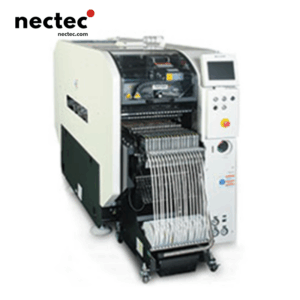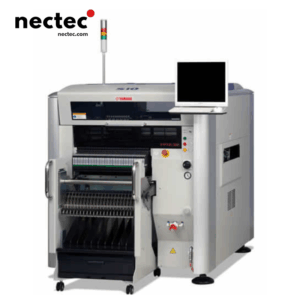In today’s fast-paced industrial landscape, the significance of automation cannot be overstated. As businesses seek to enhance efficiency and reduce production costs, the adoption of advanced machinery has become paramount. Among the innovations revolutionizing manufacturing processes is the auto manual pick and place machine. This technology not only streamlines operations but also elevates the quality of work produced. In this article, we will explore the mechanics of pick and place machines, their various applications, and the anticipated advancements that will shape the future of this technology.
Ce este o mașină Pick and Place?
A pick and place machine is a type of automation equipment designed to accurately and efficiently move products from one location to another. Primarily employed in manufacturing, these machines are utilized to place components onto printed circuit boards (PCBs) with unparalleled precision. The primary components of a pick and place system include a robotic arm, a camera system for vision, and a conveyor or workspace where items are assembled.
Cum funcționează?
The operation of an auto manual pick and place machine can be broken down into several stages:
- Identificare: Using advanced imaging technology, the machine identifies the position and orientation of items on the assembly line.
- Prinderea: The robotic arm employs specialized grippers or suction cups to securely grasp the identified components.
- Transport: The machine transports the components to their designated positions with remarkable speed and accuracy.
- Plasament: The components are placed onto the desired location, whether it be a PCB or packaging unit. This step is crucial, as precision placement minimizes the risk of defects and waste.
Aplicații în diverse industrii
Pick and place machines have versatile applications across numerous sectors, including:
Fabricarea produselor electronice
In the electronics industry, these machines play an indispensable role in assembling PCBs. The ability to handle thousands of components per hour allows manufacturers to meet high-demand production schedules while ensuring precise component placement, essential for optimal function.
Industria alimentară și a băuturilor
As companies aim to improve food safety and hygiene, pick and place machines are increasingly used in food packaging. They can handle various food items while maintaining stringent compliance with cleanliness standards, making them ideal for automated assembly lines.
Textile Sector
In the textile industry, these machines are employed for tasks such as sorting fabrics and placing them into order for production. Automation in textiles is transforming traditional methods, optimizing labor costs while improving accuracy in production.
Avantajele utilizării mașinilor Pick and Place
Integrating auto manual pick and place machines into manufacturing processes comes with various advantages:
- Eficiență crescută: The speed of operations dramatically increases as machines can work without breaks, allowing for prolonged production times.
- Acuratețe îmbunătățită: The precision of these machines minimizes human error, resulting in higher quality products and reduced waste.
- Siguranță îmbunătățită: By automating repetitive tasks, the risk of workplace injuries is greatly reduced.
- Cost-eficacitate: While there is an initial investment, the long-term savings and improved productivity often outweigh the costs.
Provocări și considerații
Despite their numerous benefits, businesses must consider several challenges associated with pick and place machines:
- Costuri inițiale ridicate: The initial investment for high-quality machines can be significant, requiring careful financial planning.
- Maintenance and Repair: As with any machinery, routine maintenance is essential to prevent downtime and costly repairs.
- Formare operator: Employees must undergo training to operate and troubleshoot these machines effectively, which can take time and resources.
Viitorul tehnologiei Pick and Place
As technology progresses, the future of auto manual pick and place machines looks promising. Innovations such as Artificial Intelligence (AI) and the Internet of Things (IoT) are poised to transform operational effectiveness even further.
Integrarea cu AI
AI is set to enhance the functionality of pick and place machines, enabling them to adapt to variations in production, learn from past operations, and optimize processes in real-time. This technological integration will create highly efficient machines capable of handling complex manufacturing needs.
Rolul IoT
With IoT, machines can communicate with one another, enabling seamless operations across production lines. This interconnectedness will facilitate data collection, helping manufacturers identify inefficiencies and adjust operations accordingly, leading to smarter factories.
Alegerea mașinii potrivite pentru afacerea dvs.
When considering the implementation of an auto manual pick and place machine, businesses should assess their specific needs and objectives. Factors to consider include:
- Volumul producției: Determine the capacity of the machine to ensure it meets production demands.
- Type of Component: Choose a machine designed to handle the specific dimensions and weight of the parts being processed.
- Compatibilitate: Ensure the machine is compatible with existing systems to streamline integration.
Gânduri finale
As the manufacturing industry evolves, embracing automation through technologies like auto manual pick and place machines is no longer optional, but essential. By leveraging this equipment, companies can enhance productivity, reduce waste, and stay competitive in a rapidly changing market. Investing in advanced automation today paves the way for a more efficient and sustainable future in the manufacturing landscape.








